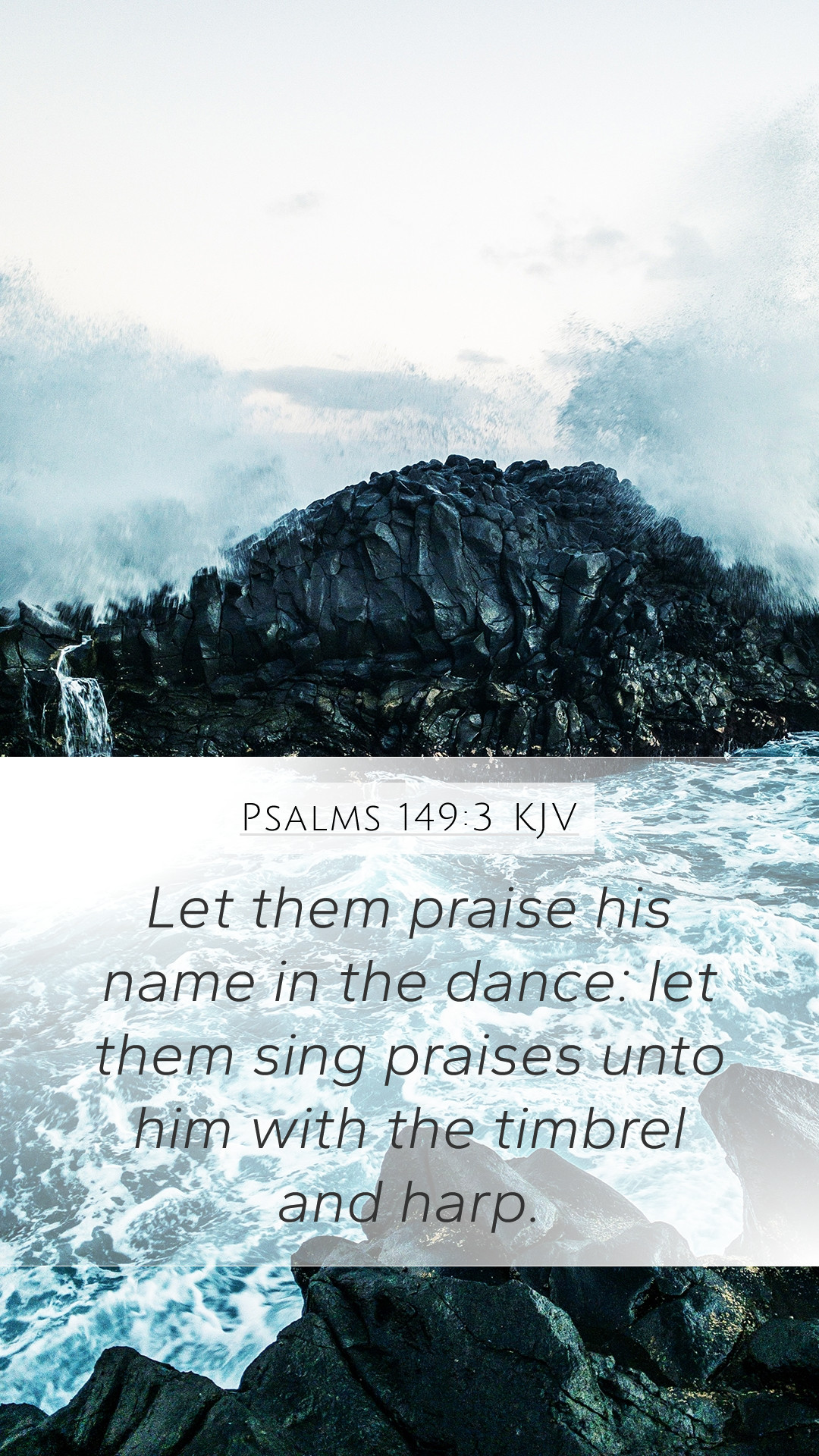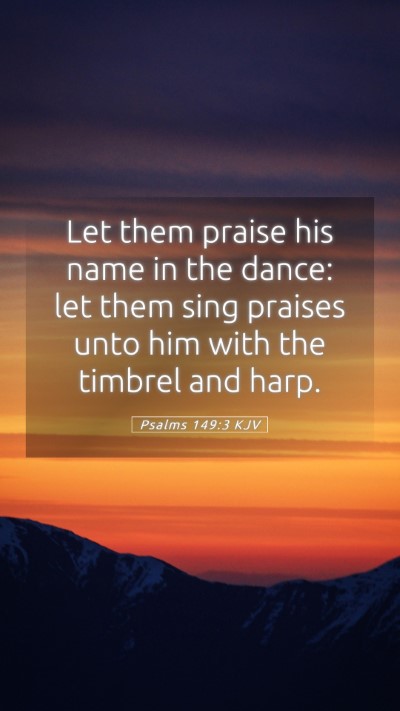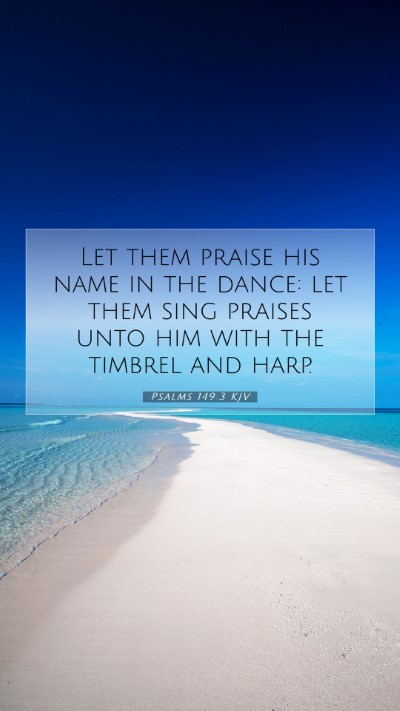Psalms 149:3 - Bible Verse Meaning and Explanation
The verse from Psalms 149:3, which reads, "Let them praise his name in the dance: let them sing praises unto him with the timbrel and harp.", invites a vibrant expression of worship through music and dance. This verse serves as a rich source for understanding the nature of praise and the joyous celebration of faith. Below is an analysis combining insights from various public domain commentaries.
Overview of Psalms 149:3
Psalms 149 is situated within the final series of psalms known as the "Hallel" psalms, expressing praise to God. The emphasis in verse 3 on dance and musical instruments indicates that worship is not just a solemn affair but also one filled with joy and exuberance. The components of worship mentioned here—the dance, the timbrel, and the harp—highlight a multifaceted approach to expressing gratitude and reverence to God.
Commentary Insights
-
Matthew Henry:
Henry explains that this verse encourages the faithful to engage their hearts and bodies in praise. Dance is portrayed as a suitable expression of joy in worship, endorsing the principle that God delights in the whole being of His worshipers acting in sincere devotion. He highlights that such worship reflects God’s glory and invigorates the community of believers.
-
Albert Barnes:
Barnes emphasizes that the phrase, "Let them praise his name in the dance," denotes an active participation in worship. He interprets "dance" not as a frivolous act but as a celebration of the gladness of the heart. Barnes suggests that the use of musical instruments like the timbrel (a type of tambourine) and harp amplifies the sound of worship and reflects creative expressions of meeting with God.
-
Adam Clarke:
Clarke’s insight indicates that the engagement in dance and music demonstrates an emotional response to God’s blessings. He further elaborates on the timbrel and harp, noting that these instruments were commonly used in celebrations, signifying the importance of remembrance and acknowledgment of God’s wondrous acts in Israel’s history.
Meaning of Bible Verses in Context
The command to "praise his name" suggests an acknowledgment of God's nature and attributes, and the joyous nature of this praise reflects not merely obligation but a heartfelt response. This passage encourages worshipers to realize their freedom and creativity in serving God. Inline with historical context, the use of dance, a common cultural practice among ancient Israelites, shows how cultural expressions can fulfill the commandment of worship.
Significance in Biblical Worship
-
Joyful Expression:
The verse encapsulates the joyous and celebratory aspect of worship. The freedom to dance and use instruments illustrates that worship can be creative and exuberant.
-
Cultural Engagement:
Clarke points out that the integration of cultural expressions, such as dance and music, into worship signifies God’s desire for His people to engage with Him in ways that resonate within their cultural norms.
-
Community Worship:
This psalm reinforces the communal aspect of worship, reminding believers that their praise can inspire others and build a sense of unity among the faithful.
Applications for Daily Life
The teachings of Psalms 149:3 can be applied in various modern contexts, encouraging believers to seek joyful and creative expressions in their worship practices. Whether in formal church settings or personal experiences of gratitude, Christians can reflect on how they express joy for their relationship with God through song, dance, and communal activities.
Cross References
- Psalms 150:4 - "Praise him with the timbrel and dance..."
- 2 Samuel 6:14 - "And David danced before the Lord with all his might..."
- Isaiah 30:29 - "...singing unto the Lord, the joy of the heart."


